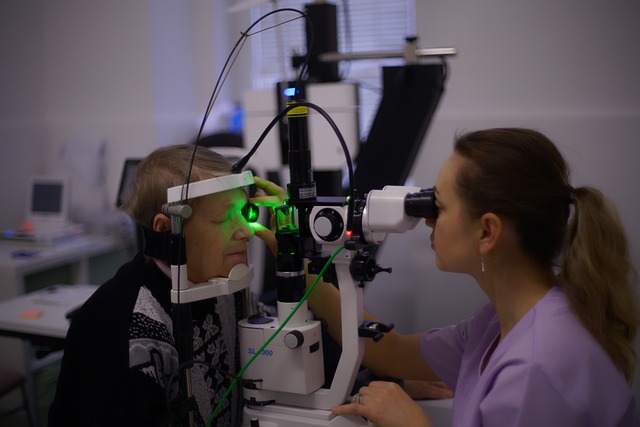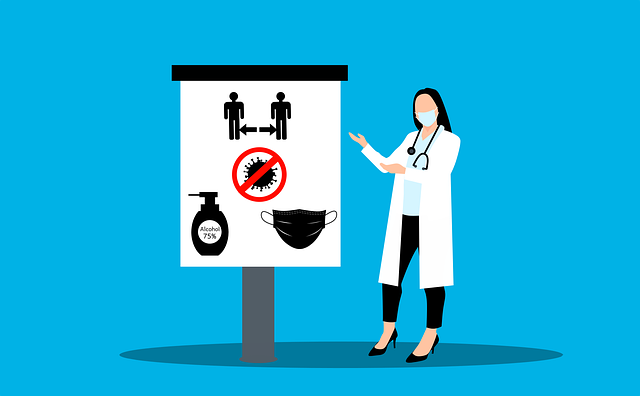The CoolSculpting Procedure offers a non-invasive way to reduce fat in the inner and outer thighs using cryolipolysis, freezing targeted fat cells without damaging tissue. This FDA-cleared treatment requires no incisions or downtime, with results visible over months. Initial consultations are crucial for eligibility, considering health, expectations, and specific factors. Common temporary side effects include redness, swelling, and numbness, resolving within days; less frequent risks may be more serious. Results are durable with proper post-treatment care, including a healthy lifestyle.
Looking to sculpt your thighs without surgery? CoolSculpting, a non-invasive fat reduction procedure, offers a promising solution. This innovative technology uses controlled cooling to eliminate stubborn fat cells, providing noticeable results without downtime.
In this comprehensive guide, we’ll explore the entire CoolSculpting for thighs process—from understanding the treatment and its mechanisms to candidate eligibility, recovery, and long-term maintenance tips.
Understanding CoolSculpting for Thighs: A Non-Invasive Approach

CoolSculpting for thighs is a non-invasive procedure designed to reduce stubborn fat in specific areas, including the outer and inner thigh. It utilizes advanced technology that targets and freezes fat cells, leading to their gradual elimination from the body. Unlike traditional liposuction, CoolSculpting does not require any incisions or downtime, making it a popular choice for those seeking a less invasive approach to body contouring.
The procedure involves the use of a specialized device that applies controlled cooling to the targeted fat areas. This cold temperature triggers a process called cryolipolysis, where fat cells are damaged and eventually broken down. Over time, these cells are naturally eliminated by the body, resulting in slimmer and more defined thighs. CoolSculpting is safe and effective for most individuals, offering a non-surgical alternative for achieving desired results without the need for extensive recovery periods.
How Does CoolSculpting Work on Thigh Fat?

CoolSculpting for thighs involves a non-invasive procedure that uses controlled cooling to eliminate stubborn fat cells in problem areas like the inner and outer thighs. During the treatment, a specialized device applies cold temperatures to the targeted fat, triggering a process where fat cells crystallize and eventually die. This cellular breakdown occurs without impacting surrounding tissue or causing discomfort.
As the treated area heals, your body naturally processes and eliminates these dead fat cells, leading to noticeable reductions in thigh fat over time. The CoolSculpting procedure is FDA-cleared and known for its effectiveness and minimal downtime, making it a popular choice for those seeking to contour their thighs and achieve a slimmer silhouette.
Benefits and Expectation of the Procedure

The CoolSculpting Procedure for thighs offers a non-invasive way to reduce fat and improve body contour. One of its key benefits is the ability to target specific problem areas, such as the outer thigh and inner thigh, without impacting muscle or causing discomfort. The procedure uses cryolipolysis, a process that freezes and destroys fat cells, leading to gradual fat reduction over several weeks. This makes it an attractive alternative to more invasive procedures like liposuction.
Patients can expect noticeable results within a few months after the treatment, with continued fat loss as the body naturally processes and eliminates the destroyed fat cells. The procedure is generally safe and well-tolerated, with minimal downtime, allowing individuals to resume their normal activities soon after. As with any cosmetic treatment, it’s essential to discuss expectations and potential side effects with a qualified provider to ensure the best outcome.
Candidate Selection for CoolSculpting Thighs

CoolSculpting is a non-invasive body contouring treatment that has gained popularity for shaping and toning various areas, including the thighs. When it comes to selecting candidates for CoolSculpting thighs, it’s essential to consider several factors. The ideal candidate is typically someone with healthy weight, good skin elasticity, and specific fat deposits in the thigh area. It’s important to note that this procedure isn’t suitable for everyone, especially those with certain medical conditions or active lifestyles.
During an initial consultation, a qualified healthcare provider will assess your overall health, discuss your expectations, and determine if CoolSculpting is aligned with your goals. They will examine the target area, take measurements, and consider factors like skin thickness, fat percentage, and any previous attempts at weight loss. This comprehensive evaluation ensures that the CoolSculpting procedure is a safe and effective choice for achieving your desired thigh contour.
The Cooling Process: What to Expect During Treatment

The CoolSculpting procedure uses a combination of advanced cooling technologies and targeted fat-freezing to reduce stubborn fat cells in specific areas, such as the thighs. During treatment, a specialist applies a gel pad to the target zone, which is then cooled to precise temperatures using external applicators. This process effectively freezes fat cells while leaving the surrounding skin and other tissues unharmed. As the fat cells freeze, they crystallize and break apart, allowing your body’s natural processes to eliminate them over time.
During the cooling process, you may experience a deep cold sensation as the temperature drops. The specialist will ensure you’re comfortable by providing warm blankets or pads. You might also feel some pulling or pinching sensations as the device targets fat layers. But overall, the procedure is designed to be non-invasive and relatively pain-free, allowing you to return to your daily activities shortly after treatment.
Recovery and Aftercare: Returning to Normal Activity

After a CoolSculpting procedure for thighs, it’s crucial to understand the recovery process and aftercare guidelines for a smooth transition back to daily activities. The good news is that this non-invasive treatment typically has minimal downtime, allowing most individuals to resume their regular routines relatively quickly.
In the days following the procedure, you may experience some temporary redness, swelling, or numbness in the treated area. Light bruising is also possible but usually subsides within a week. It’s recommended to take it easy for the first 24 hours, avoiding strenuous exercise or physical activity that could put pressure on your thighs. Over-the-counter pain relievers can help manage any mild discomfort. As you recover, gradually reintroduce normal activities, starting with light walks and gentle exercises. Within a week or two, most people are back to their regular routines without significant restrictions. Remember, each individual’s healing process is unique, so always follow your healthcare provider’s specific aftercare instructions for optimal results and faster recovery.
Potential Risks and Side Effects: What to Watch Out For

CoolSculpting for thighs, like any procedure, comes with potential risks and side effects that patients should be aware of before proceeding. The most common temporary side effects include redness, swelling, and numbness at the treatment area. Some individuals may also experience mild discomfort or a tingling sensation during and after the CoolSculpting procedure. These symptoms usually subside within a few days.
Less frequent but more serious potential risks include skin irritation, bruising, and changes in skin sensitivity. In rare cases, patients might experience complications such as fluid accumulation or tissue damage. It’s crucial to consult with a qualified healthcare provider who is experienced in the CoolSculpting procedure to understand these risks better and to ensure proper aftercare for optimal results and minimal adverse effects.
Long-Term Results and Maintenance Tips

The results of CoolSculpting for thighs are typically long-lasting, with many patients experiencing a significant and sustained reduction in fat cell volume. However, it’s important to remember that individual outcomes may vary based on factors like lifestyle, diet, and genetics. To maintain your results, adopting a healthy lifestyle is crucial. This includes maintaining a balanced diet focused on whole foods and regular physical activity. Regular exercise not only helps to tone muscle but also supports overall metabolic health, aiding in the prevention of fat cell regrowth.
Post-treatment care plays a vital role in maximizing the benefits of the CoolSculpting procedure. Patients should avoid extreme temperature changes and prolonged exposure to cold immediately after treatment. Additionally, staying hydrated and consuming a diet rich in antioxidants can help support your body’s natural healing process. Regular check-ins with your dermatologist or CoolSculpting provider are also recommended to monitor progress and address any concerns promptly.
